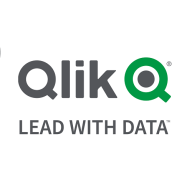


Find out what your peers are saying about Alteryx, SAP, Altair and others in Predictive Analytics.
Alteryx helps familiarize managers with artificial intelligence-driven possibilities.
In my organization, we moved from OBI to Qlik Sense due to limitations with OBI, resulting in very high ROI.
This saves a significant amount of time, particularly for reports that would have needed around fifty people.
The ROI of using Tableau extends to its seamless integration across various platforms, as it's from Salesforce and thus not limited to any specific cloud provider.
I contacted customer support once or twice, and they were quick to respond.
The customer service was not good because we weren't premium support users.
Customer support is good since I've had no issues and can easily contact representatives who respond promptly.
While tech support is comprehensive, the stability of Qlik Sense means I generally do not need it.
Technical support requires improvement.
In Turkey, the consultant firms are very professional, and they support you.
They provide quick email and phone responses and have Thai-speaking personnel.
The technical support for Tableau is quite good.
I find Tableau's technical support to be good with elite support, but it struggles with usual, general support.
Alteryx is scalable, and I would give it eight out of ten.
It performs well in terms of performance and load compared to others.
I believe it is easily scalable.
Tableau is easy to use across various dimensions, whether on-premises or on the cloud.
The solution is fully scalable and performs well even with large datasets, provided there is proper supporting hardware.
Tableau is easy to scale.
I didn't need to reach out to Alteryx for support because available documents usually provide enough information to resolve issues.
I have not encountered any lagging, crashing, or instability in the system during these three months of usage.
The stability is very good.
The application hangs after continuous use due to the buildup of cache.
I rate the stability a five or six because Tableau updates very often with new versions or patches.
The tool could include more native connectors, such as for global ERPs, instead of requiring additional fees for these connections.
The support structure changed; initially, we received great support, however, it later became less reliable due to licensing issues and a tiered support system.
It would be beneficial if Alteryx could lower its price or introduce a loyalty program for individual consultants and freelancers like me.
Power BI has better visualizations and interactions with updates in 2023 that provide ease of use.
Providing an API feature to access data from the dashboard or QEDs could be beneficial.
Maybe more AI or real-time analytics could be incorporated.
We cannot send the entire Excel file reports via email within Tableau.
The product owner should enhance its benefits or clarify its role.
It sometimes requires extensive investigation to determine why the data does not appear correctly.
Alteryx is more cost-effective compared to Informatica licenses, offering savings.
It has a fair price when considering a larger-scale implementation.
Alteryx is expensive.
Compared to Power BI, it is definitely costly.
Among the BI tools and data analytics tools, Qlik is the most expensive.
For small or large organizations needing many or few licenses, pricing varies.
Power BI as a much cheaper alternative.
A license for 150 users costs around $17,000 USD per year.
The cost for viewer rights is around $60, but it can vary based on the business and is usually for a year.
Alteryx not only represents data but also supports decision-making by suggesting the next steps.
Alteryx is user-friendly and allows easy creation of workflows compared to Informatica PowerCenter.
The tool's flexibility in saving processes and using a vast amount of available memory has been extremely helpful.
From an end-user perspective, it's convenient and performance-oriented, providing something meaningful from all the organization's data.
It is a single product that I can use as an ETL database, BI, and more.
It has an interactive interface with Qlik graphs, pivot, and interactivity, which makes it easier to use than other tools.
A significant feature for me is the real-time connection to data sources because it effectively manages large data sets.
Tableau serves as a stable dashboarding tool for higher management, aiding in quick decision-making.
Building hyper extracts and visualization capabilities make Tableau a robust tool for data analysis.



Alteryx can be used to speed up or automate your business processes and enables geospatial and predictive solutions. Its platform helps organizations answer business questions quickly and efficiently, and can be used as a major building block in a digital transformation or automation initiative. With Alteryx, you can build processes in a more efficient, repeatable, and less error-prone way. Unlike other tools, Alteryx is easy to use without an IT background. The platform is very robust and can be used in virtually any industry or functional area.
With Alteryx You Can:
Alteryx Features Include:
Some of the most valuable Alteryx features include:
Scalability, stability, flexibility, fast performance, no-code analytics, data processing, business logic wrapping, scheduling, ease of use, data blending from different platforms, geo-referencing, good customization capabilities, drag and drop functionality, intuitive user interface, connectors, machine learning, macros, simple GUI, integration with Python, good data transformation, good documentation, multiple database merging, and easy deployment.
Alteryx Can Be Used For:
Alteryx Benefits
Some of the benefits of using Alteryx include
:
Reviews from Real Users
"Automation is the most valuable aspect for us. The ability to wrap business logic around the data is very helpful." - Theresa M., Senior Capacity Planner at a financial services firm
"Alteryx has made us more agile and increased the speed and effectiveness of decision making." - Richard F., Director, Digital Experience & Media at Qdoba Restaurant Corporation
"The scheduling feature for the automation is excellent." - Data Analytics Engineer at a tech services company
"The product is very stable and super fast, five-star. It's significantly more stable than its nearest competitor." - Director at a non-tech company
“A complete solution with very good user experience and a nice user interface.” - Solutions Consultant at a tech services company
"There are a lot of good customization capabilities." - Advance Analytics PO at a pharma/biotech company
Qlik Sense is a visual analytics and business intelligence (BI) platform that gives users full control over their system’s data. From this platform they can control every aspect of their system data. It maximizes an organization’s ability to make decisions driven by their data.
Benefits of Qlik Sense
Some of the benefits of using Qlik Sense include:
Reviews from Real Users
Qlik Sense stands out among its competitors for a number of reasons. Two major ones are its associative analytics technology and its remote access capability. Qlik Sense employs an associative analytics engine that gives users the ability to take their data analytics to the next level. Users can create visual connections between different datasets spread across their network, creating deep insights that enable users to gain a full understanding of their data. This engine is easily scaled up to allow a large number of users to benefit from the deep insights that it provides. Users can access Qlik Sense from anywhere in the world. Qlik Sense has an online portal that can be used consistently from anywhere at all. Having the ability to remotely analyze data gives users flexibility when it comes to choosing how to deploy their manpower.
Jarno L., the managing director of B2IT, writes, “The associative technology features are the solution's most valuable aspects. Qlik was the first company to implement an in-memory associative analytics engine. This basically means that all data is loaded into memory, but it also means that instead of joining data together, the data is associated together. From the front end, from the user interface point of view, data can be joined or included or excluded on the fly. It can be drilled down and drilled through and users can slice and dice it and that type of thing can be done from anywhere in the data to any other place in the data. It doesn't have to be predefined. It doesn't have to have hierarchies or anything like that.”
Tami S., the senior business intelligence analyst at the La Jolla Group, writes, “With the changing business landscape, it is nice to access Qlik Sense through an external website. As an organization when we use QlikView Desktop, we need to connect to our internal network. We can access QlikView through the QlikView access point but the website has a little different look and feel than the desktop application. We appreciate that Qlik Sense is browser-based and the user experience is the same whether at home, in the office or on a boat. As long as the user has internet access, performance is the same.”
Tableau is a tool for data visualization and business intelligence that allows businesses to report insights through easy-to-use, customizable visualizations and dashboards. Tableau makes it exceedingly simple for its customers to organize, manage, visualize, and comprehend data. It enables users to dig deep into the data so that they can see patterns and gain meaningful insights.
Make data-driven decisions with confidence thanks to Tableau’s assistance in providing faster answers to queries, solving harder problems more easily, and offering new insights more frequently. Tableau integrates directly to hundreds of data sources, both in the cloud and on premises, making it simpler to begin research. People of various skill levels can quickly find actionable information using Tableau’s natural language queries, interactive dashboards, and drag-and-drop capabilities. By quickly creating strong calculations, adding trend lines to examine statistical summaries, or clustering data to identify relationships, users can ask more in-depth inquiries.
Tableau has many valuable key features:
Tableau stands out among its competitors for a number of reasons. Some of these include its fast data access, easy creation of visualizations, and its stability. PeerSpot users take note of the advantages of these features in their reviews:
Romil S., Deputy General Manager of IT at Nayara Energy, notes, "Its visualizations are good, and its features make the development process a little less time-consuming. It has an in-memory extract feature that allows us to extract data and keep it on the server, and then our users can use it quickly.
Ariful M., Consulting Practice Partner of Data, Analytics & AI at FH, writes, “Tableau is very flexible and easy to learn. It has drag-and-drop function analytics, and its design is very good.”